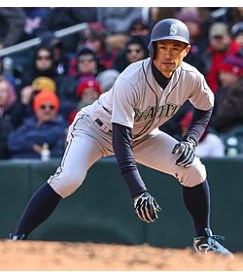
SEATTLE — If Ichiro Suzuki is elected into the National Baseball Hall of Fame on Tuesday — which he could potentially do as the first position player with a unanimous vote — it’s widely expected that when he’s enshrined this July, his plaque will feature him in a Mariners cap.
Suzuki might prefer not to have a logo included out of respect for the Yankees and Marlins, with whom he played from 2012-17. But that seems unlikely given that his MLB career was largely defined by his time with the Mariners — and that he remains a fixture with the organization today as a special assistant to the chairman.
If Suzuki opts for Seattle’s logo, it’ll be a celebration of the player but also the franchise, one more than three decades in the making, going back to the early 1990s, when the Mariners began their pursuit to eventually sign him in November 2000.
“It’s really emotional because he’s more like one of my children than he is a ballplayer,” said Ted Heid, who was a key figure of the Mariners’ scouting in the Pacific Rim from 1997-2015, and as such, courting Suzuki.
In a paneled interview with MLB.com, Heid, Jim Colborn — a pitching coach in the early 1990s for Suzuki’s Orix Blue Wave team in Japan before becoming a Mariners scout — and Chuck Armstrong, the Mariners’ team president for 28 years, offered insights on recruiting and eventually signing Suzuki.
* * *
Colborn was with Orix during Suzuki’s rookie season in 1992, and Suzuki was already dreaming big.
“He would constantly ask me about going to the States,” said Colborn, who played in the Majors from 1969-78. “He’d corral me, and say, ‘You think I can play in the Major Leagues? What do I have to do?’ I’d say, ‘Just be yourself, and you’ll be all right,’ and he said, ‘No, maybe I need more home runs?’”
Two years later, Suzuki, whose reputation as an elite hitter was via a contact-oriented, all-fields approach, crushed 25 homers for Orix, simply to show that he could.
This was wildly early, and Suzuki wouldn’t be eligible to play in MLB for years due to regulations that eventually became the Japanese posting system. That doesn’t account for the hesitation that most MLB clubs had about Japanese position players at the time, questioning if their skills would translate to elevated competition.
But Colborn, whom the Mariners hired in 1997 as a scout for the Pacific Rim, was clearly onto something.
“To a scout’s eye, it was fairly obvious to me that he’d succeed,” Colborn said.
Ultimately, however, signing Suzuki became an edict from ownership.
‘You must not fail’
Nintendo held a majority stake in the Mariners for more than two decades before selling that majority in 2016 to the current ownership group. Nintendo’s most monumental contribution — along with many political and social ones — helped to keep the Mariners in Seattle after a legitimate push from the previous ownership group to relocate.
Spearheading those efforts was Hiroshi Yamauchi, the Nintendo chairman who stepped in to buy the club in 1992 as a favor to the region, which was home to his Redmond, Wash., based Nintendo of America.
Yamauchi delegated the team’s inner workings to many already in place before the transition, including Armstrong, but he developed an obvious affinity for Japanese players. When Suzuki was eligible to be posted ahead of the 2001 season, Yamauchi made his interest clear.
“You must not fail,” Yamauchi told Armstrong, to which Armstrong added in retrospect, “I was worried for my job. … It was very important to him.”
The Spring Training trial run
Armstrong didn’t meet Yamauchi in person until a trip to Japan after the 1997 season, which coincided with the first time he saw Suzuki in person. During that visit, Yamauchi expressed discontent that the Mariners had failed to sign pitcher Hideo Nomo, who joined the Dodgers out of Nippon Professional Baseball and won the National League Rookie of the Year Award in 1995.
Leave a Reply